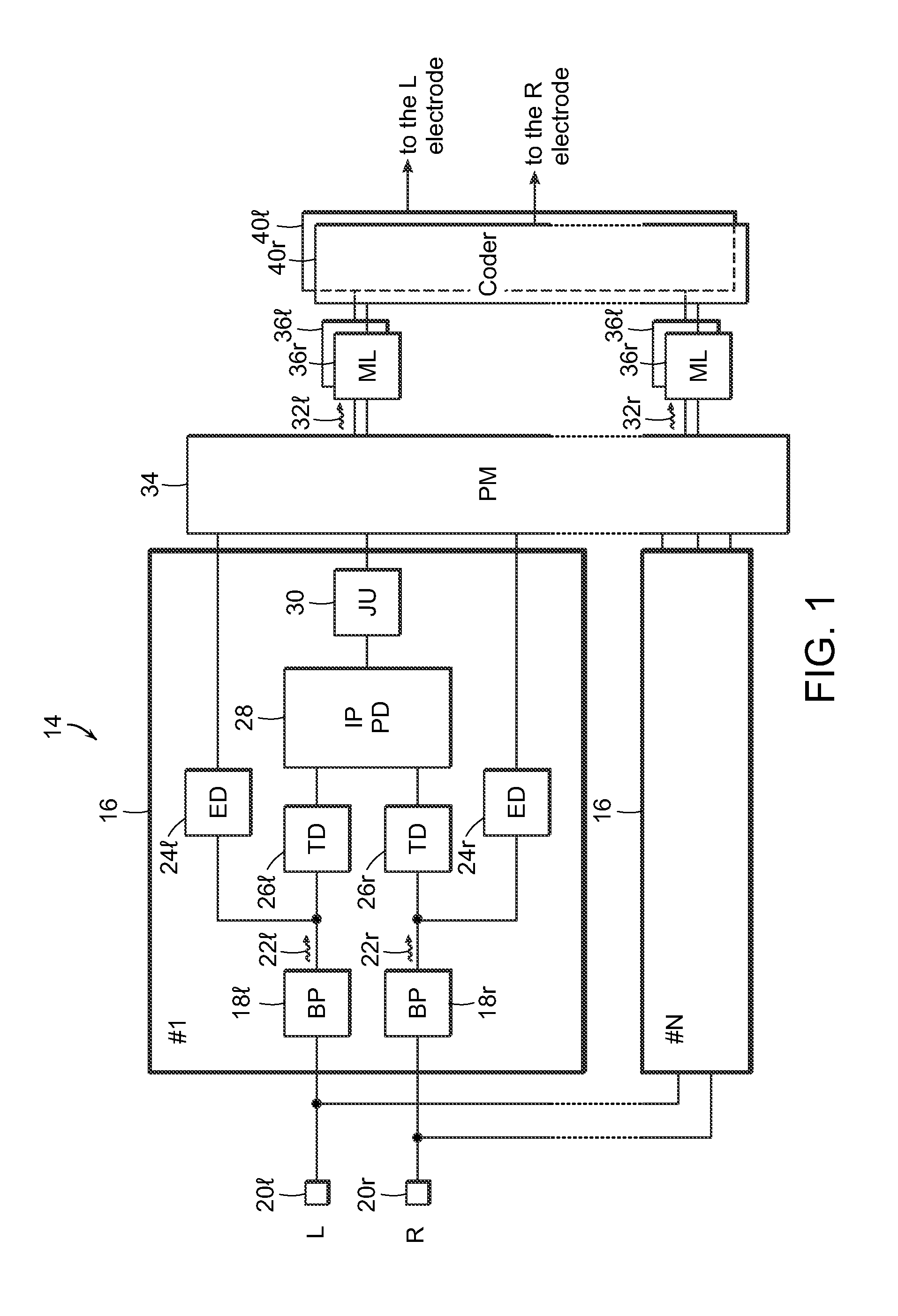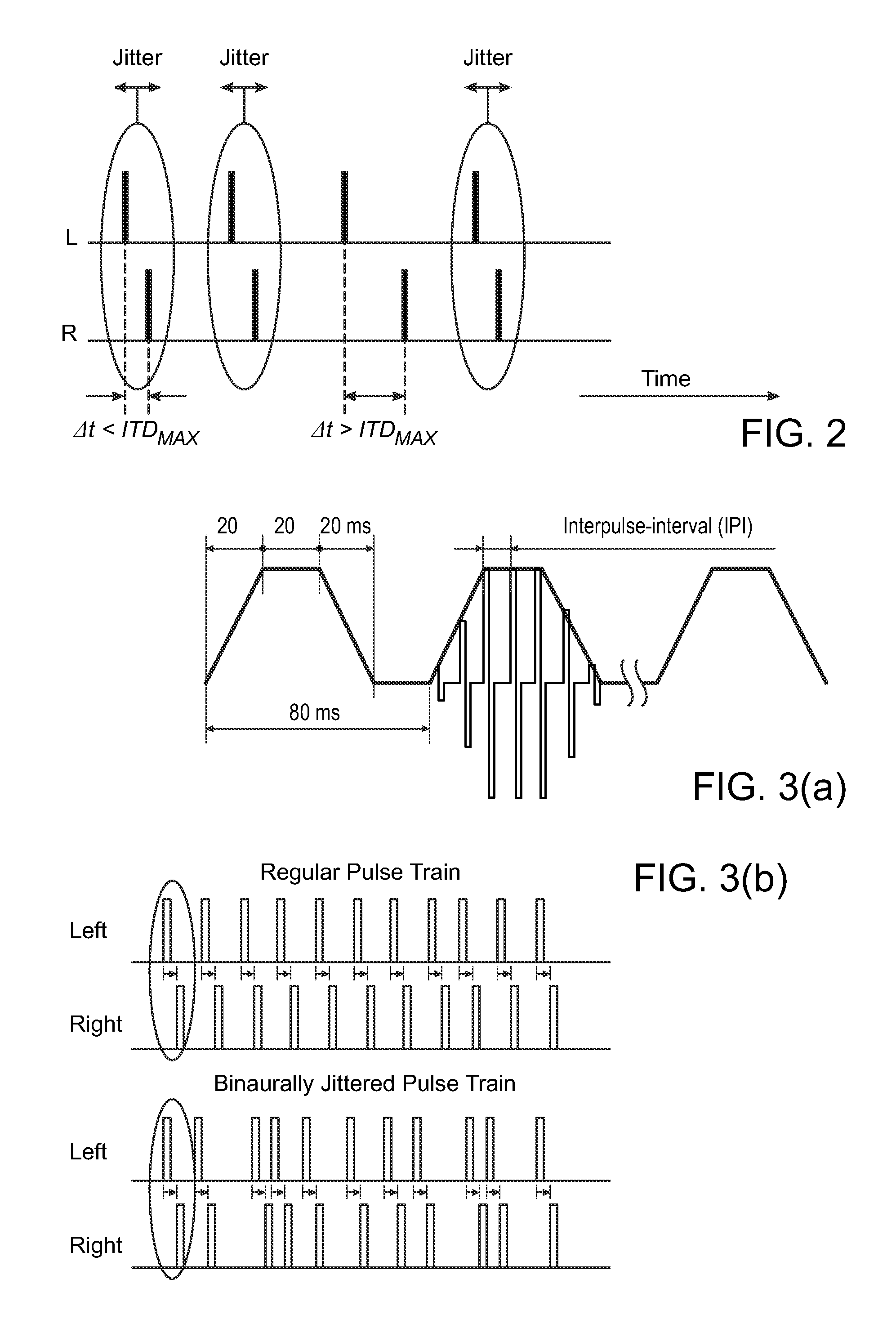Binaural stimulation in neural auditory prostheses or hearing aids
a technology of binaural stimulation and auditory prostheses, applied in the field of medical implants, can solve the problems of not finding improvement in sound localization or hearing aid listeners are also known to have difficulty in localizing sound sources and speech understanding in noisy environments, and achieve the effect of avoiding time-overlap
- Summary
- Abstract
- Description
- Claims
- Application Information
AI Technical Summary
Benefits of technology
Problems solved by technology
Method used
Image
Examples
Embodiment Construction
[0025]Embodiments of the present invention provide binaural stimulation in neural auditory prostheses and hearing aids that allows for a better sound localization and / or an improved understanding of speech in the presence of noise.
[0026]CI listeners are in principle sensitive to fine structure ITD, but this sensitivity declines at a fine structure rate of a few hundred pulses per second which is considerably lower than the pure tone frequency limit in normal hearing listeners of 1500 Hz.; see, for example, Majdak, P. et al., Effects Of Interaural Time Differences In Fine Structure And Envelope On Lateral Discrimination In Electric Hearing, J. Acoust. Soc. Am. 120, 2190-2201, 2006; Laback, B., Effects Of Interaural Delay In Ongoing Signal, Onset, And Offset In Three Cochlear Implant Listeners, J. Acoust. Soc. Am 121, 2182-2191, 2007; van Hoesel, Sensitivity To Binaural Timing In Bilateral Cochlear Implant Users, J. Acoust. Soc. Am. 121, 2192-2206, 2007, all incorporated herein by ref...
PUM
 Login to View More
Login to View More Abstract
Description
Claims
Application Information
 Login to View More
Login to View More - R&D
- Intellectual Property
- Life Sciences
- Materials
- Tech Scout
- Unparalleled Data Quality
- Higher Quality Content
- 60% Fewer Hallucinations
Browse by: Latest US Patents, China's latest patents, Technical Efficacy Thesaurus, Application Domain, Technology Topic, Popular Technical Reports.
© 2025 PatSnap. All rights reserved.Legal|Privacy policy|Modern Slavery Act Transparency Statement|Sitemap|About US| Contact US: help@patsnap.com



